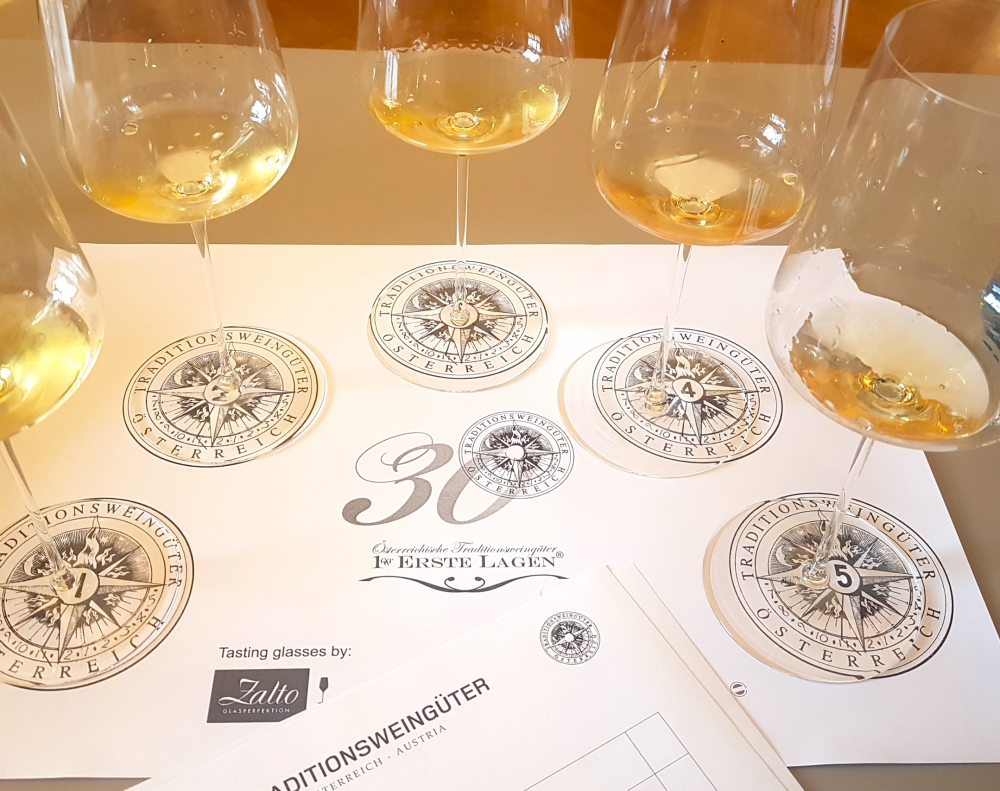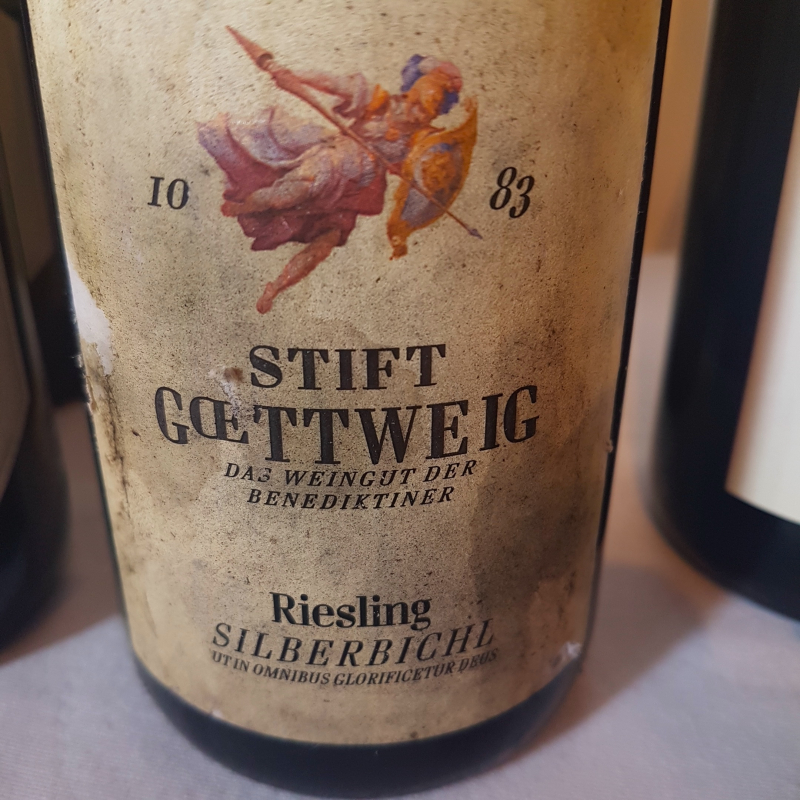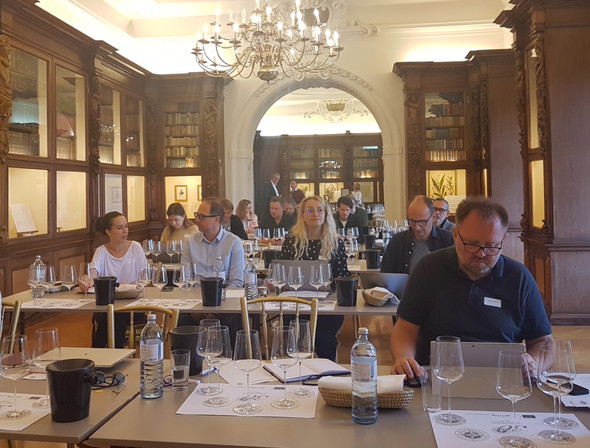This year not only marked a marked expansion of the Austrian single-vineyard wines, and indeed the range of varieties tasted by journalists and experts at the Austrian Single Vineyard Summit, it was also significant in that it marked the 30-year-anniversary of the Austrian Traditional Winegrowers Association (ÖTW). Or rather, the 31st, as Chairman Michael Moosbrugger, CEO of Schloss Gobelsburg, pointed out that the association had actually begun in 1991 rather than 1992 as previously thought.
Some early gatherings took place in the late eighties, when producers from Lower Austria would get together every first Monday of the month to discuss the deep connection between wine and its origin, and when these gatherings were discontinued due to old age, the ÖTW was formed to carry the work forward. Initially formed of ten producers from the Kamptal and Kremstal in 1992, to fight against ‘corporate winemaking’ and the mass-produced, uniform product that wine was becoming, its primary objective was the creation of a classification of Austria’s vineyards, or Ried. Over the years, it expanded to include winemakers from Traisental and Wagram and then in 2018, Wien and Carnuntum. The ÖTW now boasts over 70 producers and 95 ÖTW Erste Lage sites, some of which will become Grosse Lage as the classification proceeds.

As 30 years could be considered a generation, the ÖTW decided it was a good idea to have a recap, along with some wines, of course, also dating back over three decades. This 30-year-anniversary tasting brought together all the association’s chairmen over the past 30 years, from Willi Bründlmayer through Michaela Ehn, Gerald Malat, Nikolaus Moser and Johannes Hirsch to its present (since 2007) incumbent Michael Moosbrugger. The chairmen (including one lady!) reminisced about change, progress, rediscovery, challenges, success and failure over the last 30 years.
A palpable feeling of a new beginning following the glycol scandal. Experiments with Sauvignon Blanc, Grüner Veltliner aged in barrique. Heiligenstein 2002, a wine that made Austrian history, despite a catastrophic year with flooding even washing away some of the stone terrace walls, showing that you can make great wines even in difficult years. Starting a vintage as exhausted as you would normally finish it. The first single-vineyard wine under screwcap. The beginning of tastings in Vienna, Salzburg and finally Grafenegg ten years ago. The gradual increase of alcohol levels in wines. The expansion of Austrian wine-drinking habits. Stylistic developments. Natural wines. The points era. The need to leave Austria to appreciate what they have here. The collective good of origin. These were all topics that were discussed in the background as we tasted our way through five flights reflecting the last three decades.
Honouring tradition
Riesling mostly, but also Grüner Veltliner, Wiener Gemischte Satz and Blaufränkisch. Ried Heiligenstein, Gaisberg, Käferberg, Falkenberg and Spitzenberg… 2010, 2006, 2002, 1992 and 1991. The individual expressions of variety, site, vintage and producer, most still showing marvellously, a couple perhaps should have been drunk a few years earlier, but some truly stunning wines demonstrating their age, vintage, complexity and terroir. Each its own personality. Perhaps the best demonstration of what the ÖTW is trying to achieve with its meticulous classification work. As Michael Moosbrugger put it: “We are living in a world where copying of styles is normal, where every day we see people trying to copy Burgundian wines, which is dangerous. The basis and beauty of the world of wine is its diversity in different parts of the world. And we have to realise, if you want to copy a different style, you can do it anywhere, and it is easier than ever before. However, developing your own style for a specific area is a cultural good, which needs to be cherished.”

The tasting and discussion concluded by looking forward to the next 30 years – this is a long-term project, after all! The ÖTW has now succeeded in getting its private classification enacted into law, which is expected to pass parliament in the next couple of months - a huge step in Austria’s wine history and one of the association’s critical goals achieved. The regional branch of Thermenregion was founded this year and that of the Weinviertel is expected within two years. The goal is now to turn the movement from a regional to a national one, gathering the country’s most visionary minds together in the association.
The future is bright
Learning from the successes and failures of the last 30 years, Michael Moosbrugger noted that although “we play with trends, we always come back to the classics, the classic expression of wine, whose most important aspect is that of enjoyment”. Thus, despite the challenges of climate change, modernisation in the winemaking world and rising alcohol levels, he sees the future as rather bright than dark! And with the progress they have made thus far, the cooperation and dedication of the winemakers, I am quite sure he is right. I look forward to seeing it with them!






